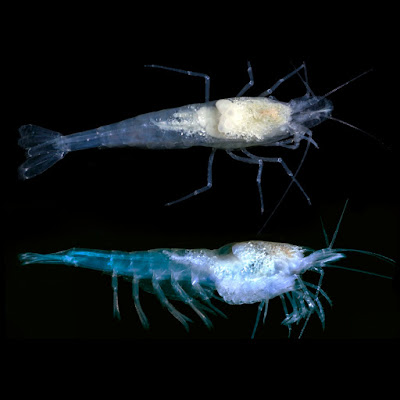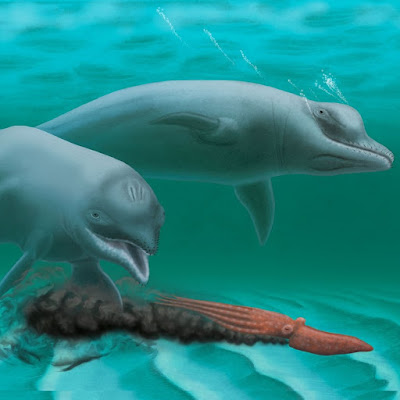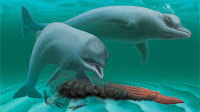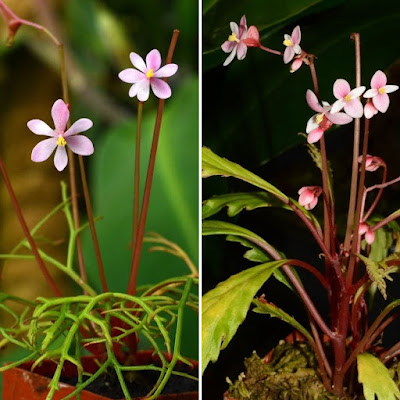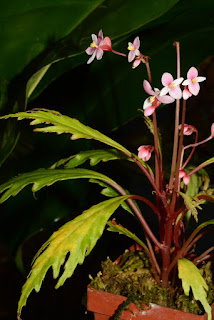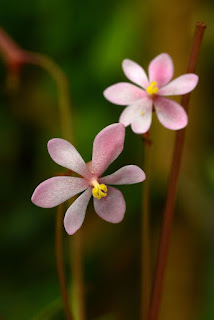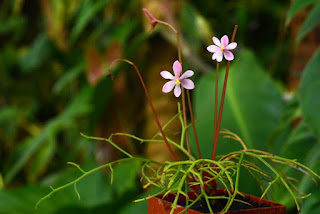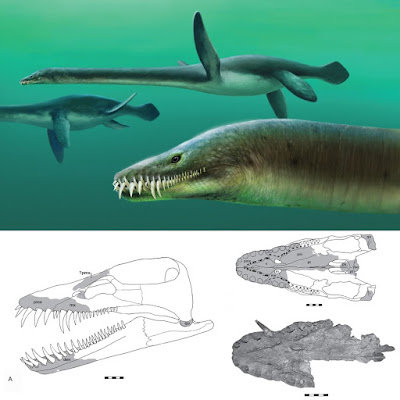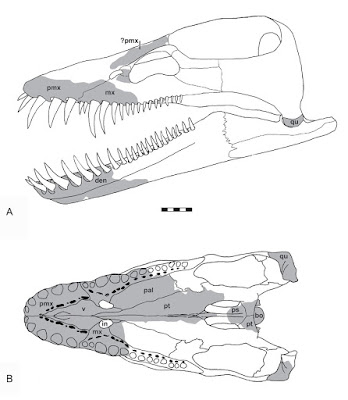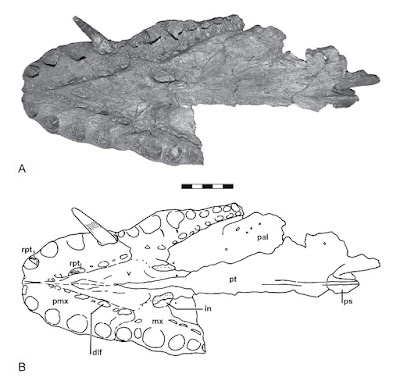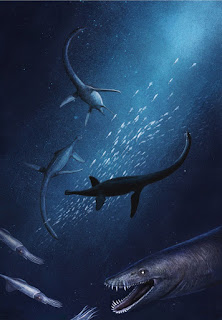[Most Recent Entries] [Calendar View]
Sunday, August 27th, 2017
| Time | Event | ||||
| 10:06a | [Crustacea • 2017] Troglocaris (Xiphocaridinella) kumistavi • A New Species of Stygobiotic Atyid Shrimp (Decapoda: Atyidae) from Kumistavi Cave, Imereti, Western Georgia, Caucasus
Abstract A new species of stygobiotic atyid shrimp genus Troglocaris (Xiphocaridinella) Dormitzer, 1853 from underground stream and lakes of Kumistavi (Prometheus) Cave, Tskaltubo, Imereti region, Western Georgia is described based on morphology and DNA analysis. Troglocaris (Xiphocaridinella) kumistavi sp. nov. clearly differs from all Caucasian congeners by (1) long slender dorsally and ventrally armed rostrum with sting-like tip turned upward, (2) very slender fingers of pereiopod II both in males and females and (3) distally expanded telson with 5–7 pairs of distal spines. These features are rather unique within the known Caucasian Troglocaris (Xiphocaridinella) and show some morphological similarities with Dinaric species of the genus. Neotype of Troglocaris (Xiphocaridinella) kutaissiana (Sadowsky, 1930) is also designated based on the material from Tskaltsitela Cave, Kutaisi, Georgia. Keywords: Crustacea, Decapoda, Atyidae, Troglocaris, Xiphocaridinella, stygobiotic, stygobiont, shrimps, new species, Georgia, Caucasus Ivan Marin. 2017. Troglocaris (Xiphocaridinella) kumistavi sp. nov., A New Species of Stygobiotic Atyid Shrimp (Crustacea: Decapoda: Atyidae) from Kumistavi Cave, Imereti, Western Georgia, Caucasus. Zootaxa. 4311(4); 576–588. DOI: /10.11646/zootaxa.4311.4.9 | ||||
| 1:38p | [PaleoMammalogy • 2017] Inermorostrum xenops • A Toothless Dwarf Dolphin (Odontoceti: Xenorophidae) Points to Explosive Feeding Diversification of Modern Whales (Neoceti)
Abstract Toothed whales (Odontoceti) are adapted for catching prey underwater and possess some of the most derived feeding specializations of all mammals, including the loss of milk teeth (monophyodonty), high tooth count (polydonty), and the loss of discrete tooth classes (homodonty). Many extant odontocetes possess some combination of short, broad rostra, reduced tooth counts, fleshy lips, and enlarged hyoid bones—all adaptations for suction feeding upon fishes and squid. We report a new fossil odontocete from the Oligocene (approx. 30 Ma) of South Carolina (Inermorostrum xenops, gen. et sp. nov.) that possesses adaptations for suction feeding: toothlessness and a shortened rostrum (brevirostry). Enlarged foramina on the rostrum suggest the presence of enlarged lips or perhaps vibrissae. Phylogenetic analysis firmly places Inermorostrum within the Xenorophidae, an early diverging odontocete clade typified by long-snouted, heterodont dolphins. Inermorostrum is the earliest obligate suction feeder within the Odontoceti, a feeding mode that independently evolved several times within the clade. Analysis of macroevolutionary trends in rostral shape indicate stabilizing selection around an optimum rostral shape over the course of odontocete evolution, and a post-Eocene explosion in feeding morphology, heralding the diversity of feeding behaviour among modern Odontoceti. KEYWORDS: Xenorophidae, Odontoceti, Neoceti, suction feeding, Oligocene Etymology. The generic name is from the Latin inermus, meaning weapon-less or defenceless, and rostrum, meaning snout, referring to the absence of teeth in the rostrum. The species name derives from Greek for strange, xeno, and face, ops, referring to the highly derived facial morphology of the holotype. Robert W. Boessenecker, Danielle Fraser, Morgan Churchill and Jonathan H. Geisler. 2017. A Toothless Dwarf Dolphin (Odontoceti: Xenorophidae) Points to Explosive Feeding Diversification of Modern Whales (Neoceti). Proceedings of the Royal Society B. DOI: 10.1098/rspb.2017.0531 This ancient dwarf dolphin may have slurped its food like a walrus sciencemag.org/news/2017/08/ancient-dwar | ||||
| 1:50p | [Botany • 2017] Begonia nosymangabensis & B. pteridoides • Two New Species of Begonia sect. Erminea (Begoniaceae) from Nosy Mangabe in Madagascar
Abstract Begonia nosymangabensis Scherber. & Duruiss. and Begonia pteridoides Scherber. & Duruiss. are described and illustrated. Both new species belong to Begonia sect. Erminea A. DC. Begonia nosymangabensis is compared to Begonia keraudreniae Bosser, from which it differs in having larger and more deeply incised leaves which lack adaxial hairs. Begonia pteridoides is related to Begonia bogneri Ziesenh. but differs by its very divided leaves. Both new species are micro-endemics, restricted to Nosy Mangabe island in northeast Madagascar and are assessed as “Vulnerable” according to the IUCN Red List Categories and Criteria. Keywords: BEGONIACEAE, Begonia, Madagascar, Masoala, Nosy Mangabe, Taxonomy Begonia nosymangabensis Scherber. & Duruiss. Begonia pteridoides Scherber. & Duruiss. David Scherberich and Jacky Duruisseau. 2017. Two New Species of Begonia sect. Erminea (Begoniaceae) from Nosy Mangabe in Madagascar. Candollea. 72(2); 257–263. DOI: 10.15553/c2017v722a3 Résumé: Begonia nosymangabensis Scherber. & Duruiss. et Begonia pteridoides Scherber. & Duruiss. sont décrits et illustrés. Les deux nouvelles espèces appartiennent au genre Begonia sect. Erminea A. DC. Begonia nosymangabensis se rapproche de Begonia keraudreniae Bosser, dont il diffère par ses feuilles plus grandes et plus profondément incisées et l'absence de poils à la face adaxiale. Begonia pteridoides est apparenté à Begonia bogneri Ziesenh., mais en diffère par ses feuilles très divisées. Les deux nouvelles espèces sont des micro-endémiques, restreintes à l'île de Nosy Mangabe au nord-est de Madagascar et sont considérées comme «Vulnérables» selon les Catégories et Critères de la Liste Rouge de l'UICN. Scherberich, D. & J. Duruisseau. 2017. Deux nouveaux Begonia sect. Erminea (Begoniaceae) de Nosy Mangabe à Madagascar. Candollea. 72; 257–263. | ||||
| 4:33p | [Paleontology • 2017] Lagenanectes richterae • A New Basal Elasmosaurid (Sauropterygia: Plesiosauria) from the Lower Cretaceous of Germany
ABSTRACT Here we report on a new basal elasmosaurid plesiosaurian, Lagenanectes richterae, gen. et sp. nov., from the Lower Cretaceous (probably Upper Hauterivian) of Germany. The material includes a partial skull (cranium and mandible), the atlas-axis complex, additional cervical vertebrae, caudal vertebrae, an ilium, and limb elements. The basioccipital and atlas intercentrum are pathologically deformed, probably due to an osteomyelitic infection. Two potential autapomorphies were found in the mandible: (1) the alveolar margin at the symphysis is laterally expanded with the rostral-most alveoli being markedly procumbent and situated along the lateral margins of the dentaries; and (2) the ventral midline at the symphysis is produced into a prominent wedge-shaped platform indented by numerous irregular pits. Lagenanectes richterae, gen. et sp. nov., also shows a number of typical elasmosaurid traits, including a longitudinal lateral ridge on the cervical vertebral centra (although a ventral notch is absent) and teeth with oval cross-sections. Lagenanectes richterae, gen. et sp. nov., is one of the best-preserved plesiosaurians from the Lower Cretaceous of Europe. SYSTEMATIC PALEONTOLOGY SAUROPTERYGIA Owen, 1860 PLESIOSAURIA Blainville, 1835 ELASMOSAURIDAE Cope, 1869 LAGENANECTES, gen. nov. Etymology:— Lagenanectes, ‘Leine swimmer,’ composed from Lagena, the medieval Old High German name of the Leine River, which passes the vicinity of Sarstedt and forms a major local hydrographic feature, and -nectes from latinized Greek: ‘o nektes’ - ‘swimmer’. Type Species:— Lagenanectes richterae, sp. nov. LAGENANECTES RICHTERAE, sp. nov. Plesiosaurus elasmosaurus (Finzel, 1964:307, nomen nudum). ‘Elasmosaurus’ (Harms, 1982:2) Elasmosaurus sp. (Zawischa, 1987:85) Skelettrest eines Elasmosauriers (Sachs, 2000:33) Schädelreste, Zähne und Wirbel eines Elasmosauriers (Sachs, 2011:12) New basal elasmosaurid (Sachs et al., 2015:131) Etymology:— The species epithet richterae is a patronym for Dr. Annette Richter, Niedersächsisches Landesmuseum, Hannover, honoring her various contributions and outstanding dedication to the vertebrate paleontology of Lower Saxony.
Sven Sachs, Jahn J. Hornung and Benjamin P. Kear. 2017. A New Basal Elasmosaurid (Sauropterygia: Plesiosauria) from the Lower Cretaceous of Germany. Journal of Vertebrate Paleontology. DOI: 10.1080/02724634.2017.1301945 |
| << Previous Day |
2017/08/27 [Calendar] |
Next Day >> |
